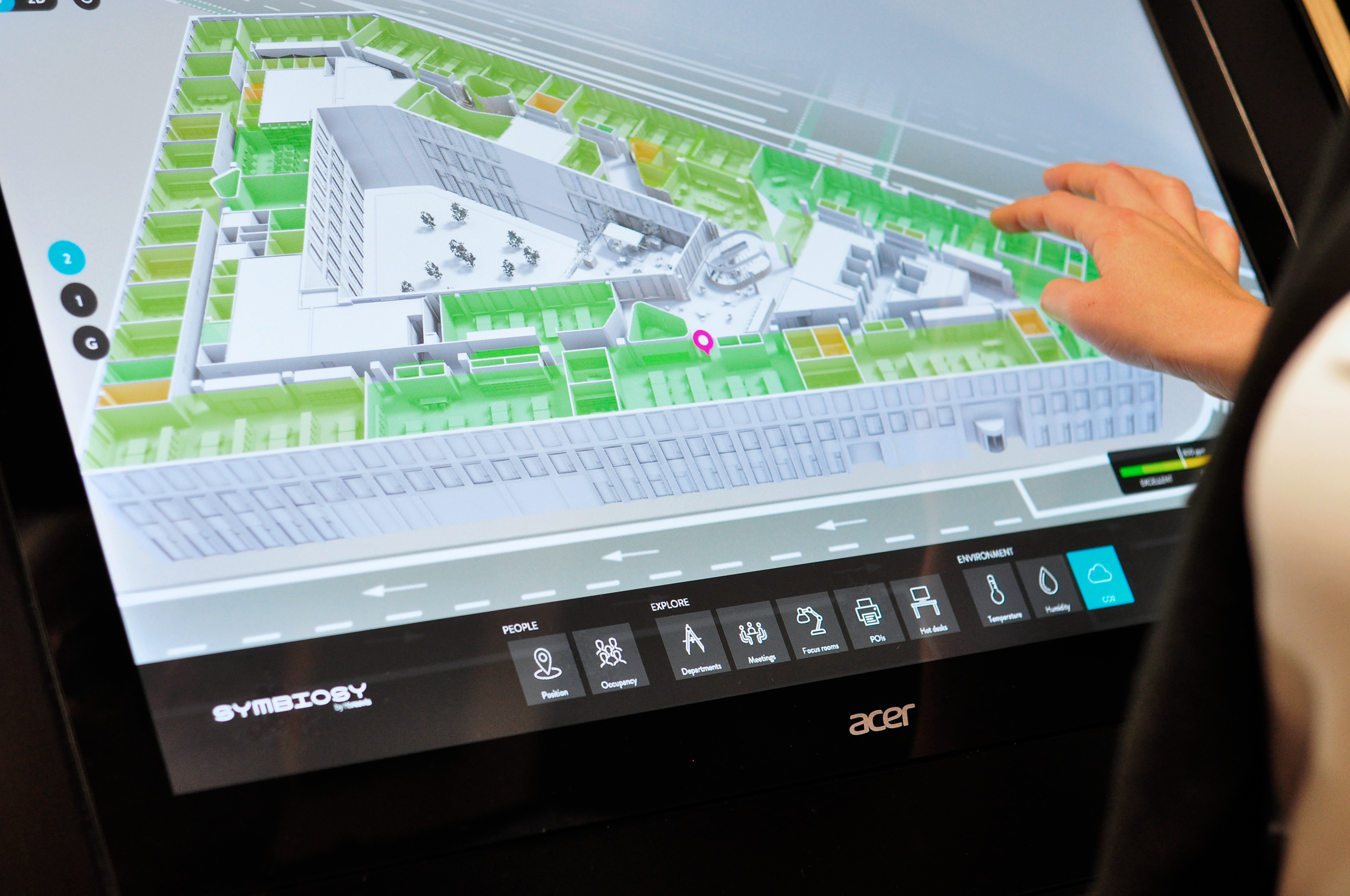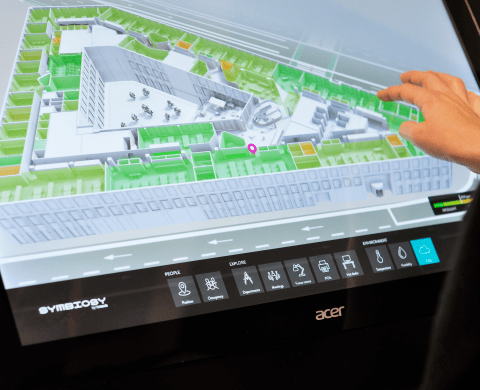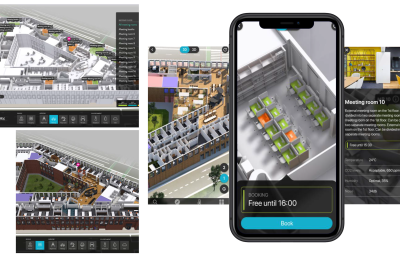Being smart. Workspaces crave it too
We occupy indoor environments most days. Why should we want future workspaces to be agile? Our Symbiosy addresses issues that often occur in workspaces with a high concentration of people.
Most of us spend our working lives inside of buildings. Most of the time, we are busy and do our best to make ourselves comfortable: if it’s hot we turn the AC on, if it’s cold we turn on a heater, if there is no air in the room we open a window, we drive around car parks and often forget our entrance cards. Future workspaces should take care of many activities for us so we can use our time more efficiently.
It all started with the Industrial Revolution. This revolution conditioned societal change and people moved from villages to cities to find work in developing industries.
As industries and services are tied together, the growth of one positively affects the other. Thus, with the development of banking services, railways and insurance companies, among many others, the number of administrative employees rose and the first office spaces were built.

However, it took some time until the modern ‘efficiency’ desk was born. It came out in 1915 to ease managers’ jobs of supervising their administrative workforces and it had little to do with the final users’ comfort.
The question of privacy in the workspace took even longer to make a stand in the world of business. The answer evolved around the cubicle system in the middle of the 20th century.
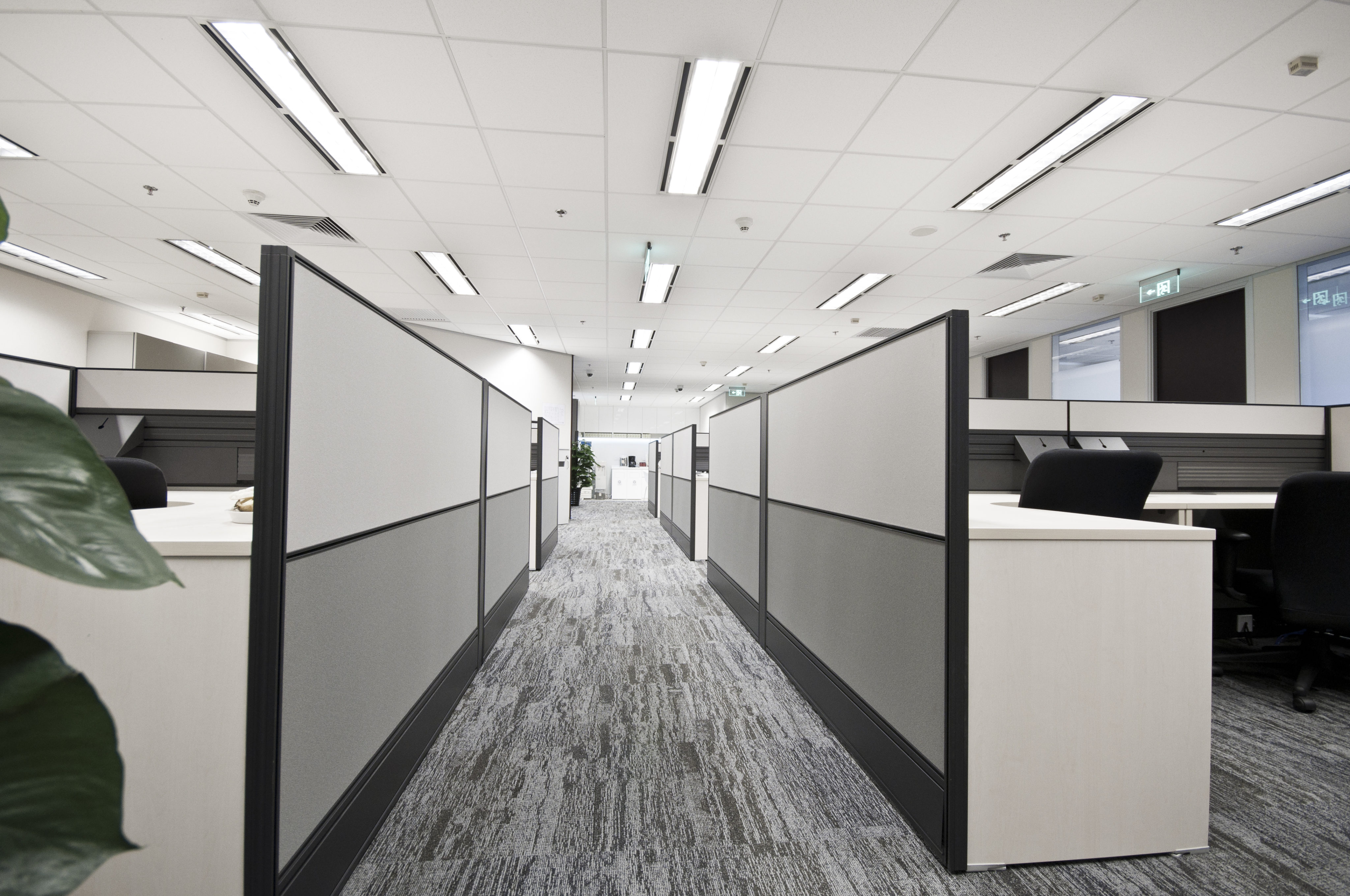
Differentiated space
Open spaces, cubicle systems, focus rooms and meeting rooms were all introduced so as to boost employees’ productivity. But just in recent years have employees become the sun of the galaxy called the office, the star that keeps all the planets in order in symbiotic offices.
Symbiosy is a term from nature and explains the convenient relationship between two or more organisms from different species that live closely together and benefit from each other. There are several types of these symbiotic interactions.
A facultative relationship is one where species live together by choice. Similarly, in a metaphorical way, humans and buildings live in facultative symbiosis.
In designing our future buildings, we not only wanted to create buildings that cater to the needs of the people in them, but also a system that benefits from people too. Why? Eventually, the lessons learned will again result in better services for people. In other words, agile workspaces should serve the individual needs of the office workforce, but at the same time, the workspace should learn from them.
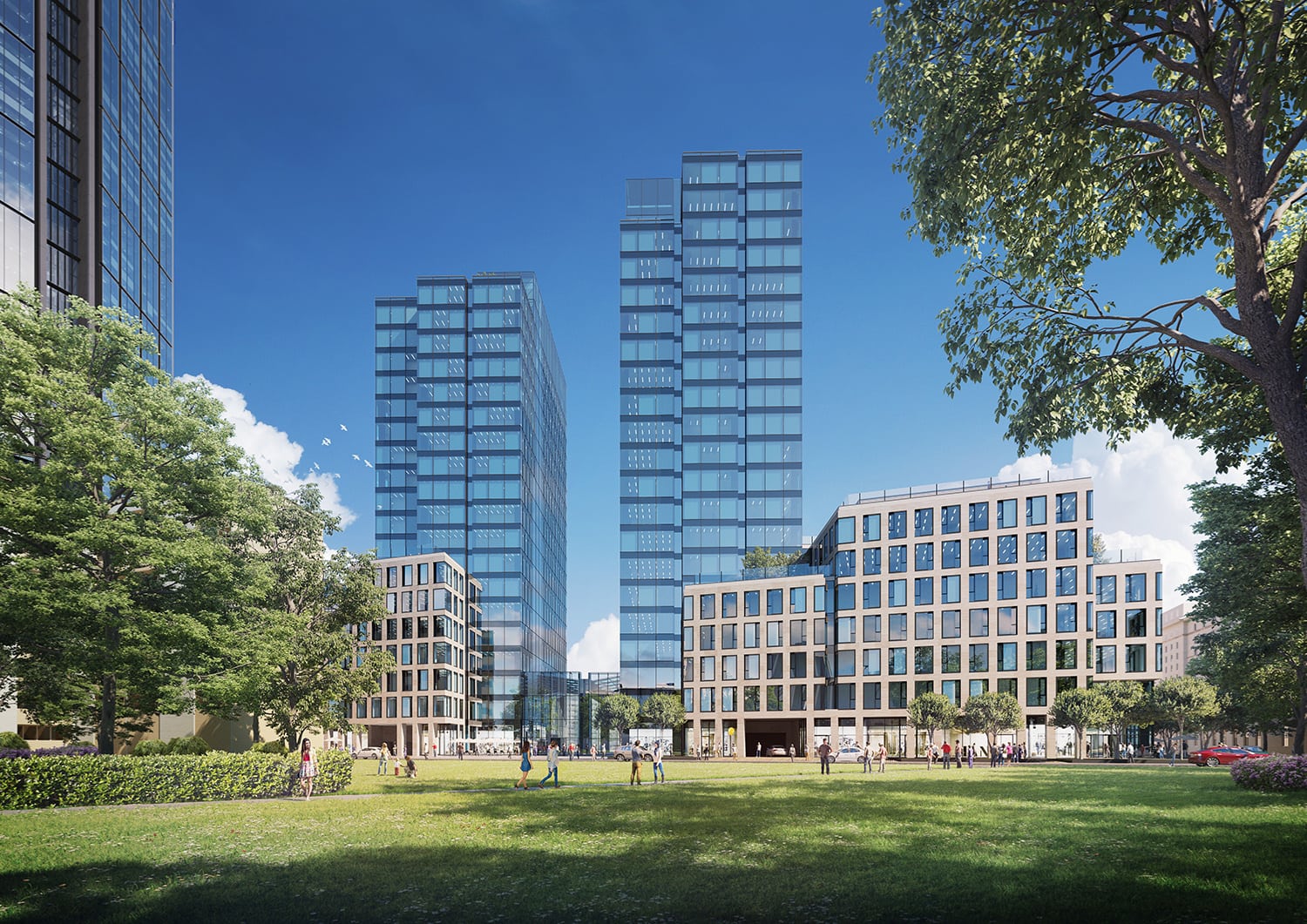
All in one
The goal of symbiotic workspaces is to address the issues that often occur in places with a high concentration of people. We don’t design them just to be regular workspaces for employees who spend 8 hours working and then head home.
We would like to create agile workspaces that are naturally in line with people’s needs, to allow them to focus more on their work and wellbeing than on environment management.

To enhance easy access to all the perks and settings, we created Symbiosy, a symbiotic workspace solution that always listens to people and is right at their fingertips.
The system constantly collects and evaluates data gathered from the users of the buildings, including their utilisation of space and their collaborations across departments. It results in an improvement in the working environment and helps with further design and space adjustments. Have a look at some examples of how a workspace like this can contribute to user comfort.
Park it easy
Woohoo! No more getting lost in the dark aisles of car parks. In symbiotic buildings access is so easy. It will provide clear directions to the nearest free parking place. Once you have quickly parked your car, the entrance to the building is the only thing left to conquer. Forget company cards! Our biometric solution will recognise you and let you right in.
Smarter over time
Symbiotic workspace is not only smart by default, it learns from you. In every focus room and meeting room, your favourite room temperature and light and shade levels can be set. Over time, symbiotic workspace masters your preferences and presets the spaces you book to match them. This way, you don’t need to set anything up anymore. Just walk in and get things done.
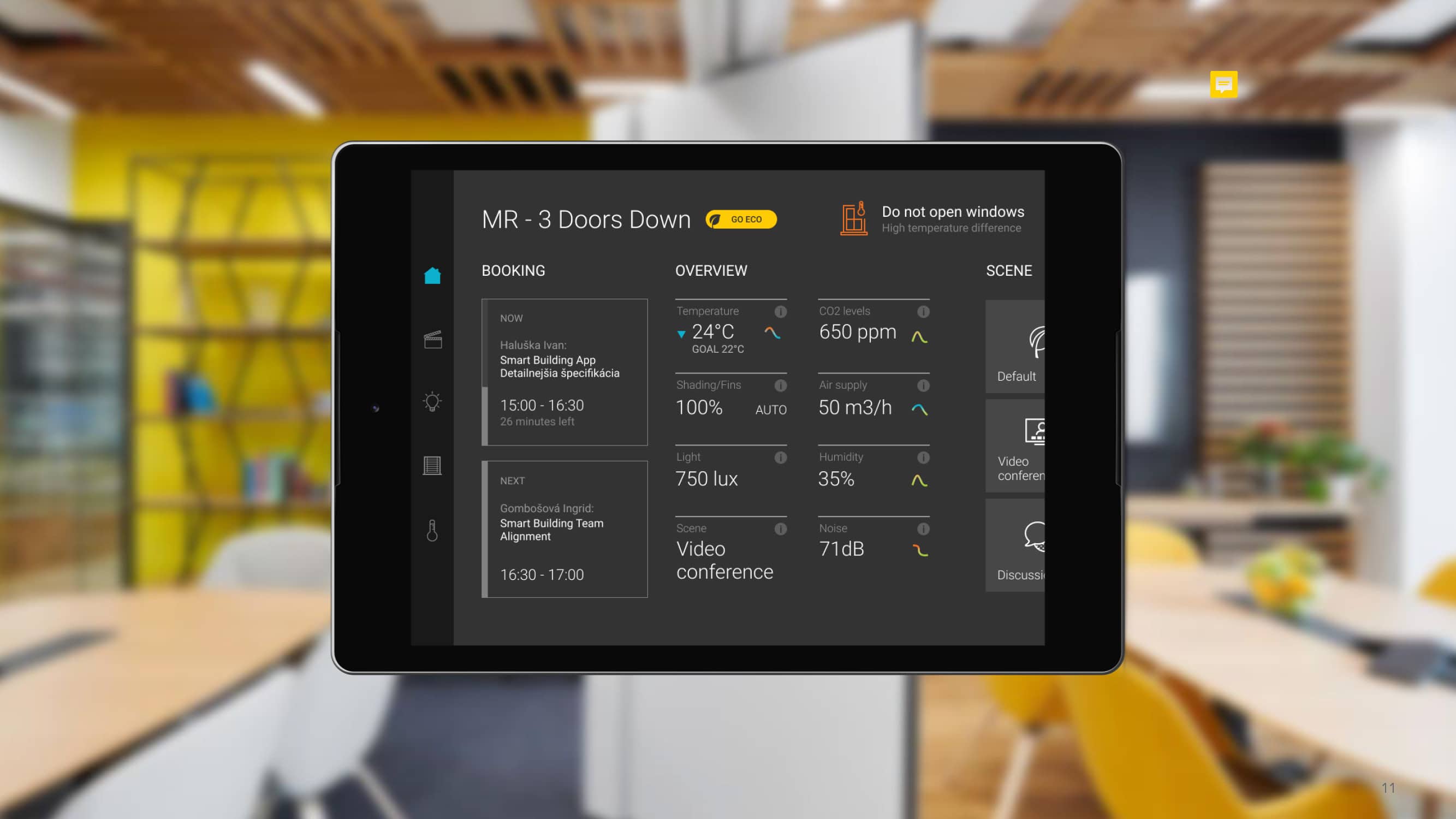
Let me do a trick for you
Sometimes, it can be a tricky task to find a place in the office to focus or have a discussion with your colleagues. Symbiosy can help you to find the closest available space. Based on the number of people joining your meeting, the app will arrange the room settings beforehand to make you all comfortable.
CO2 overdose
Many rooms do not have direct access to fresh air coming in through open windows. One of the most common nightmares is being stuck in a meeting with fuggy air. Symbiosy’s solution will protect you from CO2 overdoses. CO2 sensors monitor its level, and when they are exceeded, the app notifies the people in the room and proposes action to decrease the CO2 level.
In a nutshell, Symbiosy really cares. It cares about learning, but more importantly, it cares about you and your wellbeing.
